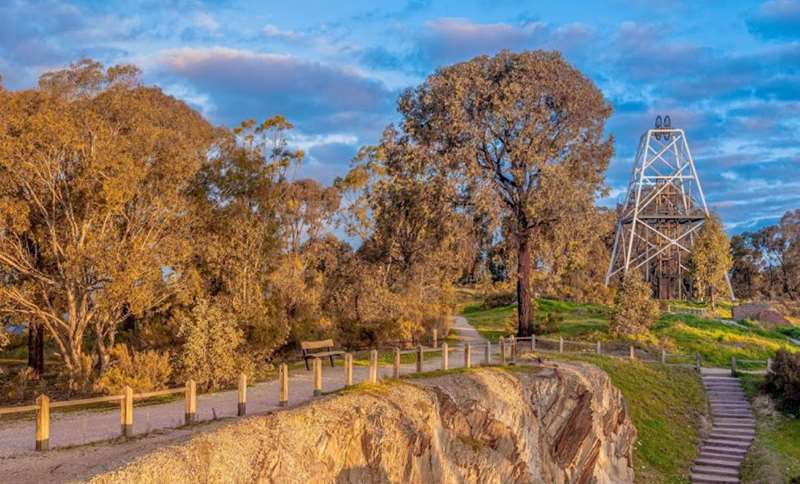Ironbark - Victoria Hill Historic Mine Reserve Diggings


Gold was discovered on Victoria Hill in 1854 and by 1861, 1,200,000 ounces of gold had been extracted from the site. The first claim was bought for 80 pounds by Prussian immigrant Christopher Ballerstedt and his son Theodore. Christopher Ballerstedt was nicknamed the "Father of the Hill" and was the first to prove that gold reefs extended below the surface. His 200-foot plus mine shafts yielded quartz rich with gold, inspired other miners, and were instrumental in Bendigo becoming the world's deepest and richest goldfield.
It is the site of Victoria's deepest gold mine at 4613 feet (1406 metres). The site still features relics of nineteenth century mining including quartz crushing machinery and the foundations of George Lansell's 180 mine. These features are characteristic of Bendigo's mining history and represent two prominent nineteenth century miners; Christopher Ballerstedt and George Lansell who held important roles in the development of Bendigo.
Victoria Hill Quartz Gold Mines are registered as a site of significance. The site is of historical, archaeological and scientific importance to Victoria. The mines represent the symbolic heart of Bendigo's gold mining history and the importance that mining played in wealth creation and the development of Victoria.
The diggings reserve is accessed from the rear of Albert Richardson Reserve located on Marong Road. The site has steep and unformed paths and is closed to the public at dusk. It is important to stay to the paths to avoid the diggings. Interpretive signs help visitors to appreciate the importance of the site and the remaining relics of Bendigo's mining history.
Opening Hours:
9.00am - Sunset (Daylight Savings Time)
9.00am - 5.00pm (Eastern Standard Time)
Location
40-56 Marong Road, Ironbark 3550 Map











